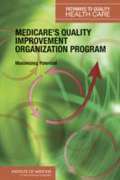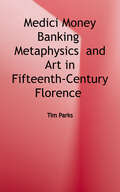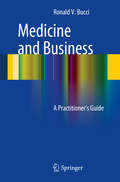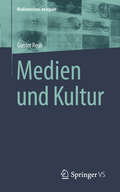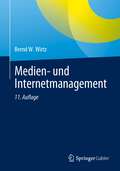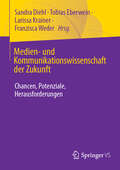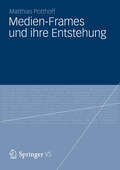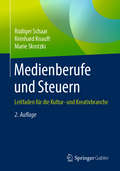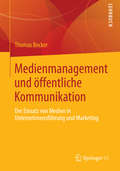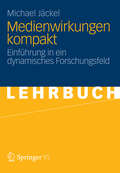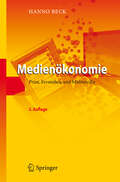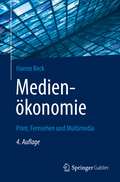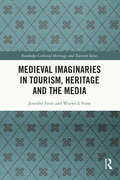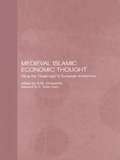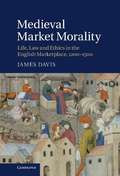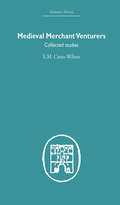- Table View
- List View
Medicare's Quality Improvement Organization Program: Maximizing Potential
by Institute of MedicineMedicare's Quality Improvement Organization Program is the second book in the new Pathways to Quality Health Care series. Focusing on performance improvement, it considers the history, role, and effectiveness of the Quality Improvement Organization (QIO) program and its potential to promote quality improvement within a changing health care delivery environment that includes standardized performance measures and new data collection and reporting requirements. This book carefully examines the QIOs that serve every state as well as the national program that guides and supports them. In addition, it highlights the important roles that a national program with private organizations in each state can play in promoting higher quality care. Medicare’s Quality Improvement Organization Program looks closely at the technical assistance role of the QIO program and the need to encourage and support providers to improve their performance. By providing an in-depth assessment of the federal experience with quality improvement and recommendations for program improvement, this book helps point the way for those who strive to create higher quality and better value in health care. Intended for multiple audiences, Medicare's Quality Improvement Organization Program is essential reading for members of Congress, the federal executive branch, the QIOs, health care providers and clinicians, and stakeholder groups.
Medication Errors: Lessons for Education and Healthcare
by Robert NaylorAdverse events in patients caused by medical management are a serious and grossly underreported public health problem. One patient in ten entering hospital will suffer an adverse event of impairment, disability or death. This book is a major comprehensive examination of the incidence and causes of adverse events. Using data obtained from hospitals within the United Kingdom, United States and other developed countries, it examines the risk factors leading to errors, the human and financial costs, and the scope to reduce errors. In particular, it focuses on the need for a critical reappraisal of undergraduate teaching and clinical tuition. All healthcare professionals throughout primary and secondary care, including clinicians, managers and policy makers, and patient and carer groups, can benefit from reading this book. It identifies possible solutions and how adverse events and medication errors can be reduced, resulting in improved patient care.
Medicetra Medtech Company, Inc.
by Doug J. ChungMedicetra MedTech Company is a dental equipment distributor and senior management is deciding whether to implement a new incentive compensation program for the sales force. For many years, Medicetra had paid salespeople only a fixed salary. Although the current plan of a straight salary seemed to be working favorably towards sales force retention salespeople had limited monetary incentives to sell more, as increased sales did not directly relate to increased pay. Management is leaning towards a change to a variable compensation plan that links performance with pay and is considering three options: 1) commission; 2) quota-bonus; and 3) commission plus quota-bonus plans. Which compensation plan would induce behavioral changes that would lead to better sales force performance but, at the same time, would appear fair to other employees?
Medici Money: Banking, Metaphysics, and Art in Fifteenth-Century Florence
by Tim ParksBefore they achieved renown as patrons of the arts and de facto rulers of Florence, the Medici family earned their fortune in banking. But even at the height of the Renaissance, charging interest of any kind meant running afoul of the Catholic Church's ban on usury. <p><p>Tim Parks reveals how the legendary Medicis—Cosimo and Lorenzo "the Magnificent" in particular—used the diplomatic, military, and even metaphysical tools at hand, along with a healthy dose of intrigue and wit, to further their fortunes as well as their family's standing.
Medicinal, Aromatic and Stimulant Plants (Handbook of Plant Breeding #12)
by Johannes Novak Wolf-Dieter BlüthnerThe agricultural sector of medicinal (including plant stimulants) and aromatic plants is characterized by an enormous number and diversity of species. Only a few of them can be considered cultivated crops in which significant breeding efforts are made. For most species, however, breeding is performed in short-term projects only. Therefore, basic knowledge about these species is still fragmentary. Our intention is to compile and organize the available information on the most commonly utilized plant species into one publication, thereby providing a standardized resource for the researchers and the grower community. This book therefore provides reference source materials for a wide variety of plant species used for human consumption due to their flavor, medicinal or recreational properties. It is divided into a section of general topics on genetic resources, breeding adaptation of analytic methods and a compilation of basic data for DNA content, chromosome number and mating system followed by a section of 20 monographs on a species or species groups.
Medicine Is the Best Laughter: A Close To Home Collection (Close to Home)
by John McPhersonCartoonist John McPherson&’s comics may be close to home, but thank your lucky stars that his erratic characters haven&’t made themselves too comfortable in your home. McPherson&’s ode to everyday life is punctuated with the off-the-wall personalities who can turn any normal occurrence into something ridiculous. The only way to read these cartoons and their comical characters—from inept surgeons to cruel chiropractors—is to expect the unexpected. Close to Home debuted in 50 newspapers in 1992 after McPherson left his engineering job to become a full-time cartoonist, and today the comic strip runs in nearly 700 newspapers worldwide. His characters are regularly confronted with everyday dilemmas, including aggressive acupuncture and leaky laughing gas tanks, and their responses are always cleverly unpredictable. The situations are somehow both outlandish yet relatable, and anyone is sure to burst out in laughter at this original e-book collection of all of Close to Home&’s boldest and best takes on everything medical.
Medicine and Business
by Ronald V. BucciThis book is designed to provide physicians with the information they need in applying business management skills to their medical practice. It covers management and leadership practices, financial planning and execution, hospital governance, managed care, marketing activities, and medical business law. Written for the physician in easily understandable language, it describes each concept, delineates its applications in various practice environments and provides insight into the future developments in each sector.
Medicines Co.
by John T. GourvilleIt is early 2001 and the Medicines Co. just received FDA approval to market Angiomax, a blood thinner to be used during angioplasties and heart procedures. It is intended to be a better alternative to Heparin, an 80-year-old drug that costs less then $10 per dose. The company believes it can sell Angiomax for a much higher price than Heparin--but how much more? Angiomax also represents the first of several drugs being developed under a rather unique business model. The company is in the business of "rescuing" drugs that other companies have given up on--i.e., they purchase or license the rights to drugs that other companies have halted development on, with the intent of completing the development process and bringing the drug to market. With the success of Angiomax, the company feels that this business model has been validated.
Medien und Kultur (Medienwissen kompakt)
by Gunter ReusMedien bestimmen unseren Alltag in jeder Lebenslage. Viele Menschen empfinden ihre Macht aber als gefährlich für die gesellschaftliche Kultur. Gunter Reus zeigt dagegen, wie sehr ein Gemeinwesen auf der kulturellen Leistung der Massenmedien aufbaut. Der Autor bedient sich dabei eines weiten Kulturbegriffs und zeichnet nach, wie sie Errungenschaften der Menschheit historisch ausgeformt haben. Ohne Medien gäbe es keine einheitliche Sprache und keinen Austausch von Information und Wissen, wie wir ihn kennen. Es gäbe keine Ausbalancierung sozialer Interessen, keine Kontrolle von Macht, keine Orientierung auf das Gemeinwohl, kein Kunstleben. Auch im Internetzeitalter bleiben Massenmedien, bei aller notwendigen Kritik an ihren Schattenseiten, unverzichtbar als Kulturträger. Sie sorgen für die Transparenz politischen Handelns ebenso wie für die (potentielle) Teilhabe aller am Kunstgeschehen. Damit prägen sie die Kultur der Demokratie wie auch die Kultur in der Demokratie entscheidend mit.
Medien und Ökonomie: Eine Einführung (Medienwissenschaft: Einführungen kompakt)
by Jens SchröterDer Band führt in die Literatur zu den verschiedenen Aspekten des Verhältnisses von Medien und Ökonomie ein. Dass "die Medien" und "die Ökonomie" in einem engen Verhältnis stehen, scheint zumindest hinsichtlich der Medienindustrie offensichtlich zu sein. Doch wäre es zu eng, die Fragen nach Medien und Ökonomie darauf zu reduzieren. So setzt z.B. die Ökonomie ihrerseits immer schon verschiedene und sich wandelnde Formen von Medien voraus und ferner ist "die Ökonomie" auch Gegenstand medialer Darstellungen.
Medien- und Internetmanagement
by Bernd W. WirtzDer Medien- und Kommunikationssektor hat sich zu einem zentralen Wirtschaftsbereich in der Informationsgesellschaft entwickelt. Dieses Buch behandelt das Medienmanagement für die elektronischen und printbasierten Medien. Vor dem Hintergrund der Branchenkonvergenz werden die grundlegenden Entwicklungen, Wertschöpfungsstrukturen, Geschäftsmodelle und Wettbewerbsstrategien im Rahmen einer integrierten Managementbetrachtung dargestellt. Darüber hinaus werden neuere Entwicklungen bei Internetmedien behandelt.
Medien- und Kommunikationswissenschaft der Zukunft: Chancen, Potenziale, Herausforderungen
by Larissa Krainer Sandra Diehl Franzisca Weder Tobias EberweinIn einer sich schnell verändernden und immer wieder durch globale Krisen provozierten Medien- und Kommunikationslandschaft sind die medien- und kommunikationswissenschaftlichen Disziplinen herausgefordert, sich mit systemischen, strukturellen und thematischen Transformationsprozessen zu beschäftigen. Insbesondere Medienökonomie, Medienethik und Journalismusforschung bearbeiten aktuelle Probleme und Fragen rund um die technologische Konvergenz der Produktion und die Nutzung von Medien sowie das ökonomische Potenzial und die ethischen Grenzen der Arbeit von Medienunternehmen und des Journalismus. Der Band greift aktuelle Transformationsprozesse auf systemischer und thematischer Ebene auf, widmet sich ethischen Herausforderungen und bezieht epistemologische Veränderungen in der Medien- und Kommunikationswissenschaft mit ein. Er richtet sich damit an Forschende und Studierende in der Medien- und Kommunikationswissenschaft und deren Schwester-Disziplinen wie Wirtschaftswissenschaften, Philosophie oder Nachhaltigkeitsstudien und an Medienpraktiker:innen.
Medien-Frames und ihre Entstehung
by Matthias PotthoffMedien-Frames sind Muster von Aussagen, die in medialen Diskursprodukten wiederholt gemeinsam auftreten. Ihnen wird die Eigenschaft zugesprochen, eine bestimmte Sichtweise zu dem behandelten Thema nahezulegen und Rezipientenmeinungen zu beeinflussen. Matthias Potthoff thematisiert, welche Faktoren einen Einfluss auf die Entstehung von Medien-Frames haben. Dazu präsentiert er ein Modell, das Einflussfaktoren auf Personen-, Organisations- und Länderebene sowie durch Ereignisse entstehende Einflüsse umfasst. Abschließend demonstriert der Autor den Nutzen dieses Modells anhand einer empirischen Fallstudie zum EU-Beitritt der Türkei.
Medienberufe und Steuern: Leitfaden für die Kultur- und Kreativbranche
by Rüdiger Schaar Reinhard Knauft Marie SkrotzkiKünstler und Medienschaffende stehen häufig vor scheinbar unlösbaren Problemen mit dem Finanzamt und im Zusammenhang mit der Künstlersozialkasse. Den Wenigsten gelingt es, im Dschungel aus Gesetzen, Regelungen und Sonderausnahmen den Durchblick zu behalten. In verständlicher Sprache verschafft dieser Leitfaden einen umfassenden Überblick über die Besonderheiten bei der Besteuerung von Medienberufen. Ein praxisnaher und lösungsorientierter Ratgeber für Journalisten, Musiker, Fotografen, Regisseure, Redakteure, Schauspieler und Autoren aus der Film-, Werbe- und Medienbranche sowie ihre Berater.
Medienkompetenz bei Lehrenden an den Berufsschulen in China: Eine international vergleichende Analyse, Fallstudie und Gestaltungsvorschläge
by Xiaohan ZhangIn diesem Band werden Forschungsergebnisse zu schulischer Medienbildung und Medienkompetenz sowie den darauf bezogenen Theorien in China und Deutschland sortiert und zusammengefasst. Als Theorieergänzung werden auch die technische Ausstattung in der Schule, Kenntnisse und Einstellungen sowie Erfahrungen der Lehrer, der Medieneinsatz im Unterricht, der Medienumgang der Schüler, die Lehrerbildung im Medienzusammenhang usw. erläutert. Es wird ein Beitrag zur theoretischen und empirischen Fundierung der medienpädagogischen Kompetenz von Lehrkräften in chinesischen Berufsschulen (mit einer standardisierten Befragung und einem leitfadengestützten Interview als empirischer Teil) geleistet. Abschließend werden Empfehlungen zur Verbesserung der Medienbildung in China und Deutschland gegeben.
Medienmanagement und öffentliche Kommunikation: Der Einsatz von Medien in Unternehmensführung und Marketing
by Thomas BeckerWie setzt man Medien und Kommunikation ein, um unternehmerische Ziele zu erreichen? Das ist das Thema des Fachgebiets Medienmanagement. Im Medienmanagement unterscheidet man zwei Disziplinen: Medien und Kommunikation als Mittel der Unternehmensführung sowie Medien und Kommunikation als strategisches Instrument im Marketing. Beide Aspekte stellt das Lehrbuch Medienmanagement und öffentliche Kommunikation für Studium und Berufspraxis vor und dient damit als Kompass für die Anwendung erfolgreicher Unternehmenskommunikation.
Medienökonomie
by Hanno BeckWer wissen will, wie Medien funktionieren, muss ihre Ökonomie verstehen. Was ist das Besondere an Medien? Welchen ökonomischen Zwängen unterliegen sie? Was wird sich in der Werbebranche durch das Aufkommen des Internets und den Einsatz von Multimediatechniken ändern? Diese und weitere Fragen werden in dem Buch diskutiert. Die Inhalte sind praxisnah und lebendig dargestellt, für die Neuauflage wurden sie aktualisiert.
Medienökonomie: Alles, was Sie über Print, Fernsehen, Radio und Internet wissen müssen
by Markus PossetIn einer Zeit, in der sich die Medien mit einem starken Vertrauensverlust konfrontiert sehen, benötigt es vor allem Aufklärung. Wie funktionieren Medien? Was sind die wirtschaftlichen Abhängigkeiten? Wie entstehen Medieninhalte und wie werden sie konsumiert? Welche Herausforderungen bringt die Digitalisierung und warum ist es heute wichtiger denn je, die Welt der Medien zu verstehen? Es sind Fragen dieser Art, mit denen sich dieses Buch beschäftigt, mit dem Ziel, interessierten Lesern die Funktionsweise der Medien näher zu bringen. Besonders in Bezug auf die sozialen Medien und die Digitalisierung ist das Wissen um die Funktionsweise wichtig – um unterscheiden zu können, welche Medien vertrauenswürdig sind und um zu verstehen, warum der unabhängige Journalismus so wichtig ist. Dieses Buch ist für alle geeignet, die Medien verstehen möchten, und genauso ist es aufbereitet: Für jeden lesbar und verständlich erklärt.
Medienökonomie: Eine Einführung mit Leitfragen (Studienbücher zur Kommunikations- und Medienwissenschaft)
by Gabriele Siegert M. Bjørn von Rimscha Gianna EhrlichAnhand von 13 Leitfragen führt dieses Open-Access-Lehrbuch in die Medienökonomie ein und stellt wesentliche Konzepte und Perspektiven vor. In den Antworten werden die in den Fragen aufgeworfenen Phänomene und Problemstellungen kontextualisiert und die jeweils involvierten Akteure, Theorien und Erklärungen vorgestellt. Die Orientierung an Problemfeldern und Beispielen erleichtert den Zugang zu den zugrunde liegenden theoretischen Konzepten und macht die Medienökonomie als Teilbereich der Publizistik- und Kommunikationswissenschaft greifbar.
Medienökonomie: Print, Fernsehen und Multimedia
by Hanno BeckWer wissen will, wie Medien funktionieren, muss ihre Ökonomie verstehen. Was ist das Besondere an Medien? Welchen ökonomischen Zwängen unterliegen sie? Was wird sich in der Werbebranche durch das Aufkommen des Internets und den Einsatz von Multimediatechniken ändern? Diese und weitere Fragen werden in dem Buch diskutiert. Die Inhalte sind praxisnah und lebendig dargestellt, für die Neuauflage wurden sie aktualisiert.
Medieval Imaginaries in Tourism, Heritage and the Media (Routledge Cultural Heritage and Tourism Series)
by Warwick Frost Jennifer FrostThis book examines the pervading influence of medieval culture, through an exploration of the intersections between tourism, heritage, and imaginaries of the medieval in the media. Drawing on examples from tourist destinations, heritage sites, fictional literature, television and cinema, the book illustrates how the medieval period has consistently captured the imagination of audiences and has been reinvented for contemporary tastes. Chapters present a range of international examples, from nineteenth century Victorian notions of chivalry, knights in shining armour exemplified by King Arthur, and damsels in distress, to the imagining of the Japanese samurai as medieval knights. Other topics explored include the changing representations of medieval women, the Crusades and the Vikings, and the challenges faced by medieval cathedrals to survive economically and socially. This book offers multidisciplinary perspectives and will appeal to scholars and students across a variety of disciplines such as cultural studies, history, tourism, heritage studies, historical geography and sociology.
Medieval Islamic Economic Thought: Filling the Great Gap in European Economics (Routledge Islamic Studies Series)
by S.M. GhazanfarThis book is a collection of papers on the origins of economic thought discovered in the writings of some prominent Islamic scholars, during the five centuries prior to the Latin Scholastics, who include St. Thomas Aquinas. This period of time was labelled by Joseph Schumpeter as representing the 'great gap' in economic history. Unfortunately, this 'gap' is well embedded in most relevant literature. However, during this period the Islamic civilization was one of the most fertile grounds for intellectual developments in various disciplines, including economics, and this book attempts to fill that blind-spot in the history of economic thought.
Medieval Market Morality: Life, Law and Ethics in the English Marketplace, 1200-1500
by James DavisThis important new study examines the market trade of medieval England from a new perspective, by providing a wide-ranging critique of the moral and legal imperatives that underpinned retail trade. James Davis shows how market-goers were influenced not only by practical and economic considerations of price, quality, supply and demand, but also by the moral and cultural environment within which such deals were conducted. This book draws on a broad range of cross-disciplinary evidence, from the literary works of William Langland and the sermons of medieval preachers, to state, civic and guild laws, Davis scrutinises everyday market behaviour through case studies of small and large towns, using the evidence of manor and borough courts. From these varied sources, Davis teases out the complex relationship between morality, law and practice and demonstrates that even the influence of contemporary Christian ideology was not necessarily incompatible with efficient and profitable everyday commerce.
Medieval Merchant Venturers: Collected Studies
by E.M Carus-WilsonFirst published in 1967, this superb collection of essays on trade in the Middle Ages has been a major contribution to modern medieval studies. Professor Carus-Wilson examines: * fifteenth-century Bristol* trade with Iceland* the Merchant Adventurers of London* the thirteenth-century cloth industry (with its highly developed capitalist system)* the export of English woollen cloth* the wine trade. Each paper is firmly rooted in original research and contemporary sources such as customs returns and company minutes, and, in addition, her expose of the dubious accuracy of Aulnage accounts is widely recognised as a classic.
